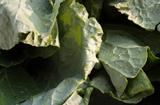Eat Local: Lettuce
Locally grown foods boost the local economy, introduce the community to agriculture, and protect natural resources. Plus, they are fresher than foods that travel many miles. Even though eating local isn’t always an option, Florida does offer a variety of local, in-season produce grown throughout the year.
Florida offers four varieties of lettuces—all of which are produced throughout the state from November to May.
Lettuce Varieties
Besides being naturally free of fat, sodium, and cholesterol, Florida cucumbers have many other nutritional benefits.
- Romaine lettuce: As you move away from the inner leaves, romaine’s tall leaves become a darker green. The leaves are also typically tall and grouped close.
- Butterhead: Unlike romaine, these leaves aren’t tightly packed together. As their name implies, they have a buttery feel.
- Looseleaf: Have you seen lettuce that doesn’t have a head? Then, you probably saw looseleaf, which leaves are linked at the stem.
- Crisphead: This type of lettuce has pale green leaves that create a tight head.
Nutritional Facts
While Florida lettuces are naturally free of cholesterol and fat, they also provide many other nutritional benefits.
- Lettuces are rich in vitamin K, which aids in healthy bone development and blood clotting.
- They are a good source of folate and vitamin C.
- With the exception of crisphead lettuce, most Florida lettuces supply lots of vitamin A, which helps fight against infection and supplements in healthy skin and vision.
- These vegetables have low sodium and low calorie content.
- Lettuces provide fiber, which lessens the risk of heart disease.
How to Select Florida Lettuce
Selecting the right Florida lettuce can differ by variety. For example, crisphead and romaine lettuces should have crisp and tender leaves. These should feel hefty for their size, too. When buying butterhead or looseleaf lettuces, however, you should purchase lettuce heads with softer leaves.
Regardless of the lettuce you buy, avoid those with dry, wilted, browned, or yellowed leaves. While having one type of lettuce can seem like enough, adding a variety of to your plate provides more nutrients than eating only one type. Also, dark green leaves have more antioxidants and nutrients than the lighter-colored lettuces.
If you’d like more information about local food in your area, then contact your local UF/IFAS Extension office for more information on local food in your area.
Adapted and excerpted from:
C. Peñuela, “Florida Fresh: Lettuce ” (FCS8879), UF/IFAS Family, Youth and Community Sciences Department (rev. 09/2012).
“Local Foods,” UF/IFAS Extension (03/2013).

Related Sites & Articles
- Hot Topics
- Community Supported Agriculture
- Eat Local: Cucumbers
- Eat Local: Summer Squash
- Starting a Farmers Market
- UF/IFAS Sites
- Local Food
- Other Sites & Publications
- Know Your Farmer, Know Your Food–USDA
- Local Food Resources–ATTRA
- Local and Regional Food Systems–ATTRA

